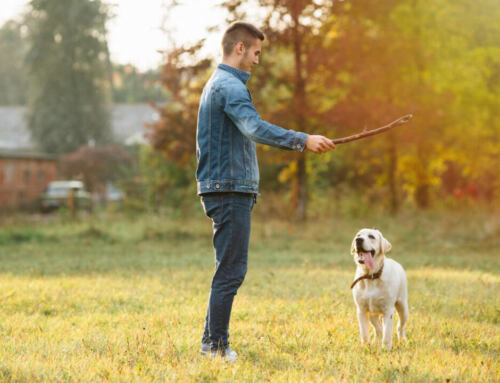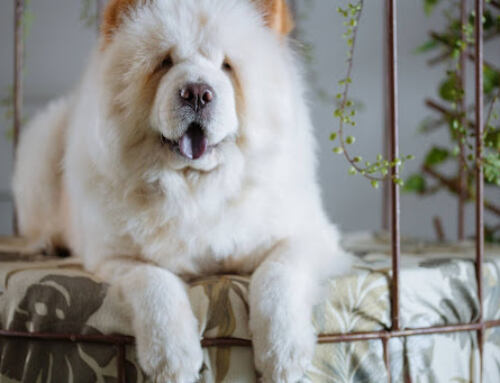We absolutely understand how frustrating those little corgi cheeks can be. But did you know that there are actually two distinct kinds of corgis, one of which has a tail? (Gasp!) Does this bulge in the back take away from how cute they are? Absolutely not! Two separate lines of corgis may be traced back to Wales: the Pembroke Welsh corgi and the Cardigan Welsh corgi. They are not a hybrid breed of the corgi, but rather distant cousins from various parts of Wales in the United Kingdom.
Nonetheless, both exhibit the following characteristics: Expressive body language, including alert, fox-like features, genuine smiles, and bright eyes. Whoa, look at those ear lobes!
Intelligence levels that require daily enrichment activities (like this corgi playing basketball!) and positive reinforcement training. Personality types who are fearless but also have a soft spot for animals and a wry sense of humor. These feisty little puppies can make you take a second look as they dash by, even if you’re being polite and not looking at their rear ends. We consulted a professional to learn how to distinguish between the two varieties of corgis.
INTRODUCTION
Overview of Corgi dog breeds
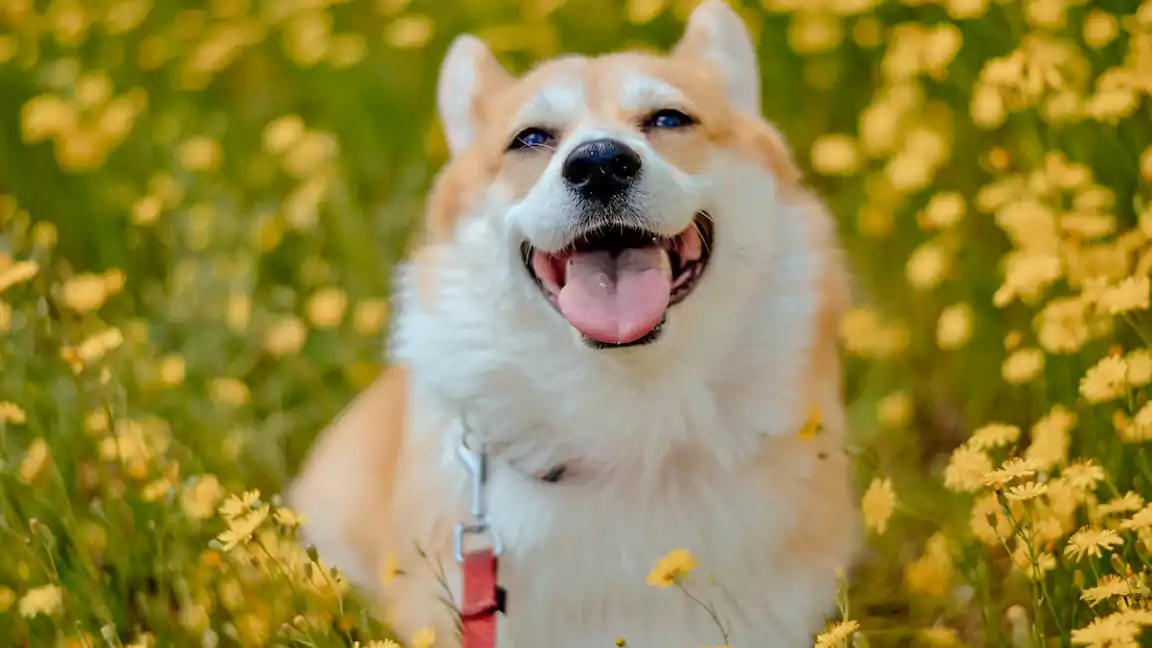
Over the past few years, corgis have risen in popularity as household pet’s thanks in large part to their internet stardom. They resemble dachshunds in that they are small overall but have a long, lean body and strong thighs. Additionally, they have a second layer of fur for added warmth. Thanks to its unique blend of characteristics, the Corgi is widely regarded as an adorable and endearing pet. Fawn, sable, black and tan, and even crimson are just some of the colors available. Its average height is 10–12 inches, weight is 25–40 pounds, and lifespan is 12–15 years.
The unusual size of the Pembroke Welsh Corgi can be traced back to its original purpose in life: herding cattle. The county of Pembroke shire, Wales, is credited with being the first to breed them. Because of their diminutive size, Corgis have a fascinating history that stands in stark contrast to other herding dog breeds.
Popularity and popularity of Corgi dogs

The popularity of Pembroke Welsh Corgis, the Queen’s favorite dog breed, has skyrocketed in the past year, according to recent statistics. The number of corgis registered by The Kennel Club (TKC) in 2021 was 1,223, the greatest total for a single year in the nearly 30-year history of the registry. The four-day bank holiday weekend honoring the Queen’s 70th Jubilee will begin on Thursday, 2 June, with the announcement of the hike.
According to TKC, the corgi’s rising popularity can be attributed in part to the breed’s prominent position in the Netflix series The Crown.
“We are delighted to see so many dog lovers waving the flag for our native British and Irish breeds,” said TKC spokesperson Bill Lambert. “This is a very memorable year for the Queen, and we are thrilled to see the Pembroke Welsh Corgi once again become a cherished breed countrywide.”
Reasons why Corgi dogs are a great pet choice
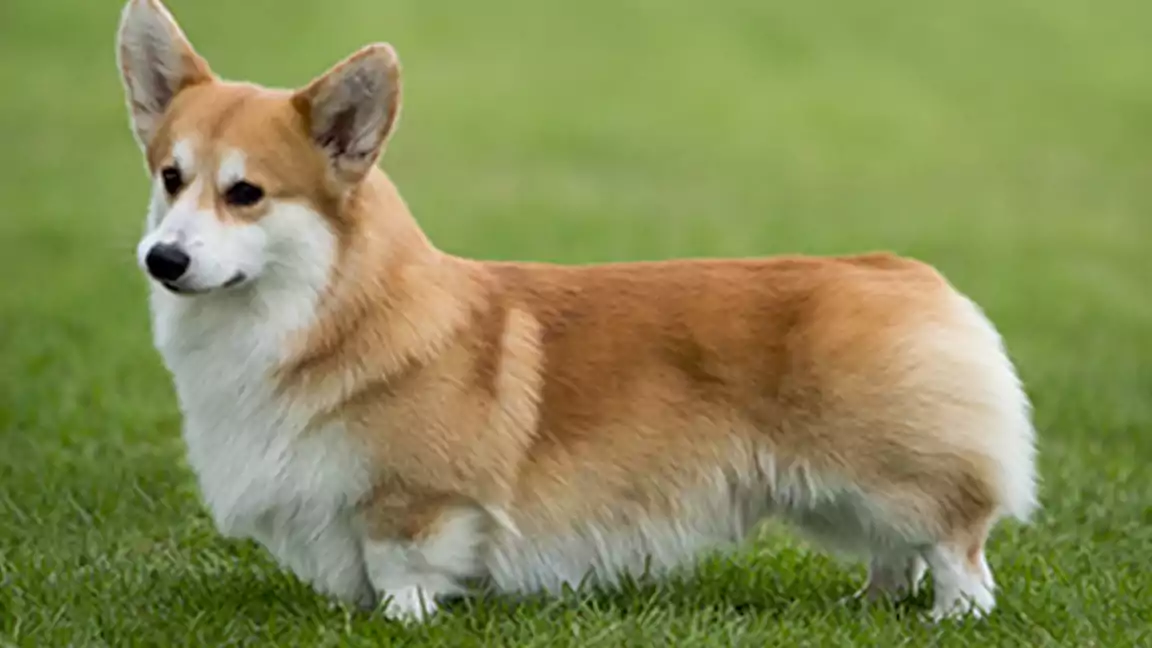
Corgis are a popular breed of dog and make excellent pets for several reasons. Here are some of the reasons why Corgis are a great pet choice:
Size: Corgis are a small breed of dog, making them ideal for apartment living or for people with limited space. They are also great for families with young children as they are the perfect size for them to play with.
Intelligence: Corgis are an intelligent breed of dog and are quick learners. They are easy to train and are eager to please their owners.
Affectionate: Corgis are known for their loving and affectionate nature. They are loyal and become very attached to their owners, making them a great choice for people who want a companion.
Active: Corgis are an active breed of dog and need plenty of exercise and playtime. They are a great choice for people who enjoy outdoor activities and want a pet that can keep up with them.
Playful: Corgis are playful and energetic dogs that love to play and run around. They are great for families with children and will provide hours of entertainment and fun.
Adaptable: Corgis are a versatile breed of dog and can adapt too many different living environments. They are great for people who live in both rural and urban areas.
HISTORY AND ORIGIN OF CORGI BREEDS

Welsh corgi: history, origin, and evolution
The Welsh Corgi is a breed of dog that originated in Wales and is believed to have been around for over 1,000 years. There are two types of Welsh Corgis: the Pembroke Welsh Corgi and the Cardigan Welsh Corgi, each with its own distinct history, origin, and evolution.
The Pembroke Welsh Corgi is believed to have been brought to Wales by Flemish weavers in the 11th century. They were originally used as herding dogs, helping farmers to drive cattle and sheep. The Pembroke Welsh Corgi is a smaller, more agile breed than the Cardigan Welsh Corgi and is known for its intelligence and loyalty.
The Cardigan Welsh Corgi is believed to be one of the oldest breeds of dog in the British Isles, with evidence of their existence dating back over 3,000 years. They were also used as herding dogs and were valued for their ability to drive cattle and protect livestock from predators. The Cardigan Welsh Corgi is a larger, more rugged breed than the Pembroke Welsh Corgi and is known for its versatility and determination.
Pembroke Welsh corgi: history, origin, and evolution
Because so little was recorded about the beginnings of the Pembroke Welsh Corgi breed, legend has come to the rescue and created one of the most heartwarming legends of the breed’s creation. Pembroke Welsh Corgis, myth has it, were ridden into war by Welsh fairies.
The Pembroke remains unique because of the fairy saddle—a hump of elevated fur behind the withers—that the fairies used to perch on when they rode the dogs. The truth of this urban legend can’t be proven, of course (even if you believe in fairies, which I do). However, the Pembroke Welsh Corgi’s origin may be more accurately traced by records kept over time. The mythical origin of the Pembroke Welsh Corgi places it in the Welsh county of that name. Cardigan Welsh Corgis resemble the standard Corgi in many ways.
In 1920, the National Breed Club recognized both types as equivalent, registering them as one. However, the Pembroke Welsh was recognized as a distinct breed in 1934. The Pembroke Welsh breed wasn’t officially recognized by the United Kennel Club until 1959. It is speculated that Flemish weavers brought over the ancestors of the Pembroke Welsh Corgi. Some people believe the Swedish spitz dogs were a part of the breeding process for the Pems, while others believe the Swedish cattle dogs were brought over by the Vikings.
Differences between Welsh Corgi and Pembroke Welsh Corgi

Physical Distinctions between a Cardigan and a Pembroke
Both the Cardigan and the Pembroke are small-sized breeds that stand on short, stocky legs and have massive heads. Both have perked ears, but the Cardigan’s are larger and rounder. Their double coats of fur require little more than a weekly bath and combing. On closer inspection, though, there are numerous distinctions. Aside from the tail, which distinguishes cardigans from pembrokes (the latter have their tails clipped close to the body), cardigans are larger and have a heavier bone. Compared to Pembrokes, male Cardigans can gain up to 38 pounds of weight. In addition to their diverse appearances, the two breeds also have distinct physical characteristics. Pembrokes are more linear and rectangular than round because of their oval bone and squared-off back end. However, Cardigans have sloping rear and rounder bones, giving them a curvier appearance.
Comparison of the Cardigan and the Pembroke Shirt Based on Characteristics
The Cardigan and the Pembroke are two breeds that adore human companionship and thrive when they get to spend time with you. They make wonderful companions, are great with kids, and relish getting in on the action whenever possible. Training is crucial for both the Pembroke and the Cardigan because of their high intelligence. However, when given consistent work to perform, they swiftly adapt and flourish.
Both of these dog varieties were bred specifically to nip and bark at cattle to herd them, a trait that they may also display when interacting with children. Plus, they make great guard dogs because they’ll alert their masters to any strange noises with a piercing bark. Anne describes Pembroke Welsh Corgis as “high energy,” “friendly (even effusive),” “affectionate,” “happy,” and “funny” at times. She thinks that these dogs are the friendlier of the two types. She explains that cardigans may be shy in unfamiliar environments, but “warm up quickly.”
PHYSICAL CHARACTERISTICS OF CORGI BREEDS
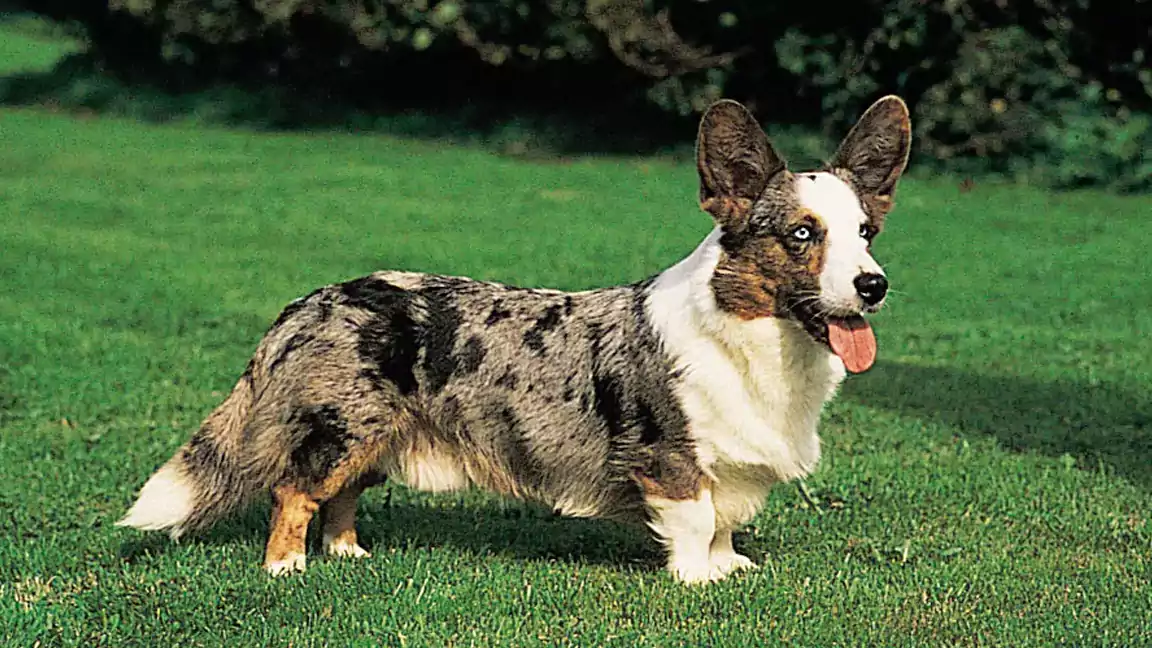
Size, weight, and height
Both male and female Welsh corgis are tiny, stocky dogs with upright ears and foxlike faces. The Pembroke has a shorter tail and pointed ears, while the Cardigan has a longer tail and rounded ears. Both are reliable guard dogs and friendly companions on the farm. They weigh between 10 and 38 pounds (25 to 25 kg), and their height ranges from 10 to 12 inches (25 to 30.5 cm) (11 to 17 kg). Reddish brown, brindle, black with tan or white, or blue-gray with black mottling all describe the length of the Cardigan’s coat. The coat of the Pembroke, which might be reddish or greyish brown or black and tan, is finer in texture. In both species, white markings are possible.
Coat, color, and grooming
Corgis have short, double coats that are waterproof and can be found in a variety of colors, with or without white markings: The colours available for coats are Fawn, Black and Tan, Sable, Red Black.
Corgis are often tricolored with tan and white, and their heads can be any color from black to red. Hair length, texture, and fluffiness can vary widely within a breed, and some individuals may have extreme examples.
Body structure and features
The characteristic features of a Pembroke Welsh Corgi are a foxy expression, prick ears, a compact build, and a short, frequently docked tail. These dogs have achondroplasia, which causes them to have abnormally short legs, so they actually measure a little bit longer than they do tall.
Temperament and Personality of Corgi Breeds
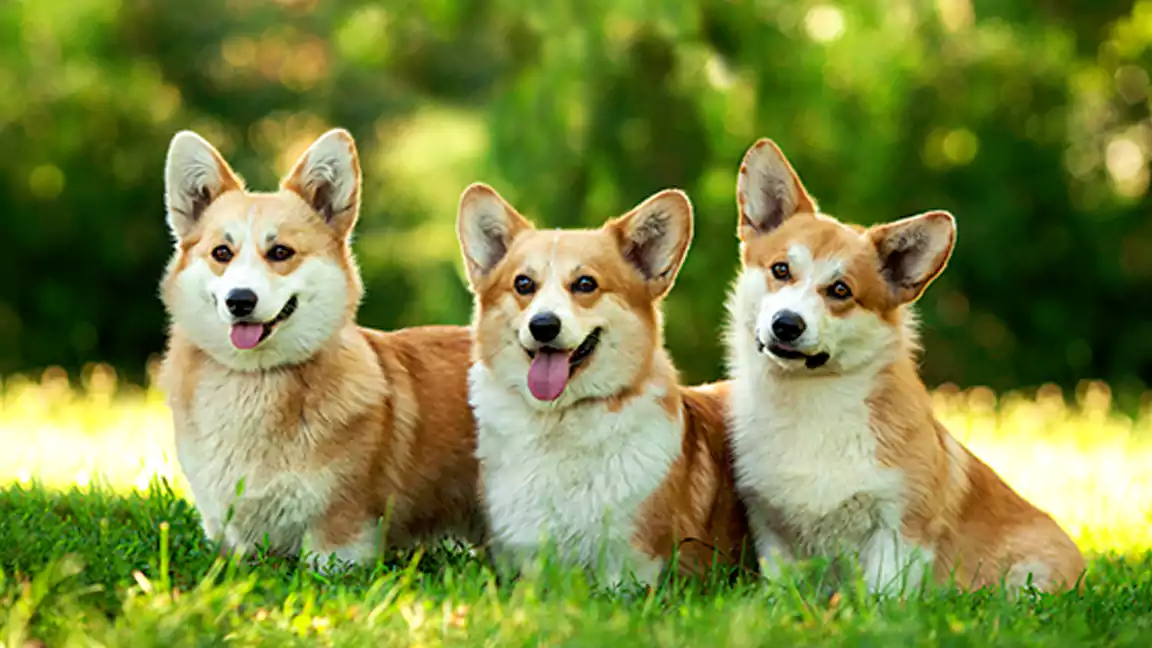
Characteristics of Corgi breeds
The Corgi scores an average of 79.6 on the American Temperament Test Society’s friendliness, devotion, and playfulness scale (ATTS). These small dogs are generally good with kids, though their herding tendencies may cause them to nibble at heels or race after them while they play. Some dogs of this breed are known to bark constantly out of nervousness around strangers.
Active and intelligent, Pembroke Welsh Corgis are always on the move. They are versatile farm dogs that can herd animals several times their size and protect the family. They prefer to be among people rather than in kennels.
Energy level, activity level, and exercise needs
When it comes to the physical and emotional well-being of Corgis, moderate daily activity is ideal. Pembrokes do well on long walks or slow jogs, but they can’t keep up with a bicyclist due to their tiny legs. Keep away from excessive temperatures, and always offer plenty of fresh, cool water to drink after activity. Cardigan Welsh corgis, like other herding breeds, are highly clever and active dogs who thrive when given a job to accomplish. If raised with kids, other dogs, and other pets, they get along great with everyone. However, they do occasionally try to herd people.
Intelligence, trainability, and obedience
A corgi requires a rigorous yet gentle trainer due to the dog’s high intelligence, limitless excitement, and want to please. Unless properly cared for, these animals can develop manipulative and even domineering personalities. All breeds benefit from beginning their socialization and training early on. These pooches are surprisingly strong and agile for their size, and they respond well to mental and physical stimulation.
Affectionate and friendly nature
Corgis are well-suited to life as family pets because they are not often aggressive or reserved, and they are also noted for their unusually high levels of affection and sweetness. This dog breed has a wonderful personality; they are kind, loyal, and devoted to their families. It’s ideal for families with kids or stay-at-home moms because Corgis need to be with their people most of the time to prevent harmful habits.
CARING FOR CORGI BREEDS
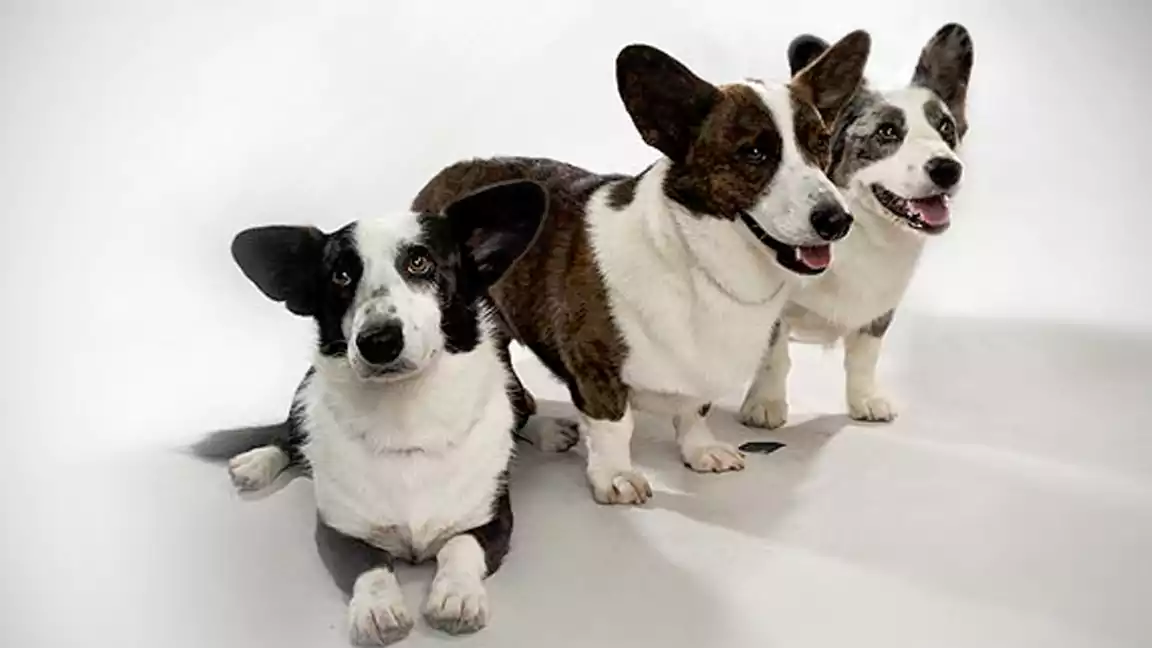
Feeding and nutrition
Don’t ever forget that Corgis were first developed in Wales. Choose canine fare that mimics the regional cuisine as closely as possible. The canines will appreciate your taking such an important measure. Corgis were frequently fed regional specialties like rabbit and meat when they were on the move as herding dogs. Cabbage, carrots, potatoes, and salmon are also favorite foods of Welsh Corgis. Carrots, if cooked and cut into small enough pieces, may be safe to eat. As a result of the presence of Solanine, a deadly compound in potatoes, you should never give your dog raw potatoes.
Twenty-five percent carbohydrates, fifteen percent to eighteen percent fat, and fifty percent to seventy-five percent protein make up the ideal ratio for optimal mineral, vitamin, and protein absorption. Dogs can safely eat fish as long as it is boneless and unsalted.
The Corgi Puppy’s Dietary Routine
Check out this recommended feeding schedule:
- Adult corgis, two nutritious meals a day if needed
- Corgis 1 year and older, no more than one bowl per day
- Puppies 6 months to 1 year, three meals per day
- Puppies 4 weeks to 12 weeks old, four times a day
- Cooked eggs, which are a rich source of digestible proteins
Grooming and hygiene
Grooming a Corgi, who has a medium dense double coat, should be done every 4-8 weeks, and more frequently in the spring and fall when they shed. So long as you clip off the undercoat, your dog can use his guard hairs to keep him cool.
Training and socialization
It’s easy to assume that there’s just one way to train a dog, but in reality, there are a wide variety of approaches used by professionals and pet owners alike. Different methods exist, such as rewarding your dog for excellent behavior with treats or using a role model for the dog to imitate in “mirror training.”
Do’s
You should begin teaching your corgi as soon as possible, even if they are just a puppy. Introduce your new puppy to the fundamentals as soon as possible, preferably no later than when it is seven weeks old.
Give Them Prizes When They Earn Them
Make it a habit to praise your dog whenever it obeys your commands. You can do this by giving them a treat or by praising them (such by saying “Good girl!” while scratching behind their ears). And don’t forget to praise them each time they use the outside to relieve themselves, so that it quickly becomes a regular part of their routine.
Encourage them to maintain a healthy level of physical activity.
Make sure to exercise your corgi often throughout the training process. This breed is naturally hyperactive, so you’ll need to give your puppy plenty of opportunities to burn off steam before training begins if you want him or her to pay attention. Playing with interactive toys is one activity that might help develop their cognitive abilities.
Provide Them with a Separate Area
During the day or when not in training, your dog will need a secure place to rest. Dogs need a safe place to retreat to, and a kennel is ideal for this purpose, particularly during the training phase. It has a dual purpose of keeping them contained and encouraging bowel and bladder discipline.
Don’ts
Here are some things you should avoid doing while training now that you know the most crucial things to do:
Staying Inside for Too Long Could Be Dangerous for Them
As was previously stated, corgis are very active pets. They thrive on human interaction and enjoy being the center of attention, so keeping them isolated for too long isn’t a good idea. Your puppy shouldn’t be left alone for longer than six hours at a time to prevent destructive behavior.
Please Wait until They’re Mature before Introducing Them to New People
As very social creatures, Corgis require regular interactions with both humans and other canine companions. If your corgi hasn’t been fully vaccinated, it’s not responsible to let them play outside with other dogs.
Health concerns and preventive measures

Pembroke Welsh Corgis, in general, have excellent health. The problem is that they, like other dogs, are susceptible to a few different diseases. Not every member of the breed is predisposed to the diseases and disorders that have been linked to the Corgi. You should always inquire about the health history of your Corgi’s ancestry with the breeder before bringing home a new puppy. A healthy dog is essential for successful breeding, thus reputable breeders will always check for any potential health problems before mating. However, the following health issues have been observed in Corgis, so be aware of them if you are thinking about getting one.
The Corgi is not immune to hip dysplasia, a disorder that affects many dog breeds. Canine hip dysplasia is a hereditary disorder characterized by faulty development of the hip socket on one or both sides. A dog with hip dysplasia will have a femur (thigh bone) that is abnormally shaped and will not fit into the hip socket normally. Spinal degeneration, also known as degenerative myelopathy, is a chronic and painful condition that can affect a Corgi’s quality of life. Degenerative myelopathy causes deterioration of spinal cord and associated supporting tissue in affected dogs.
Conclusion
In all honesty, Corgis deserve their immense popularity. They make for a wonderful companion and are great with kids. Just make sure you’re ready to take on the commitment of pet ownership, and do your homework on any breeder or facility you’re considering buying a Corgi from.


